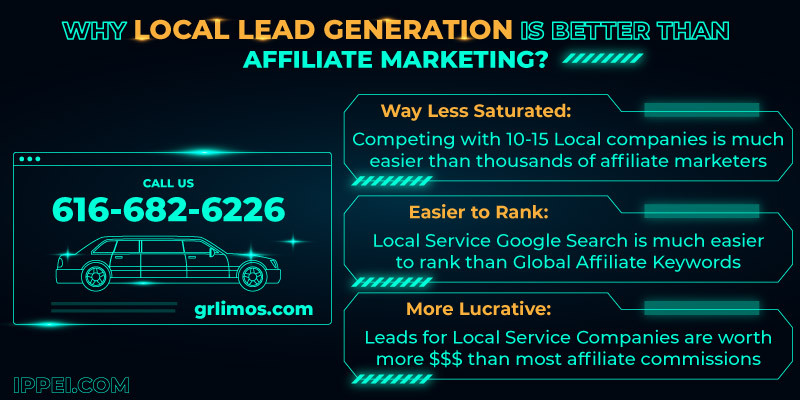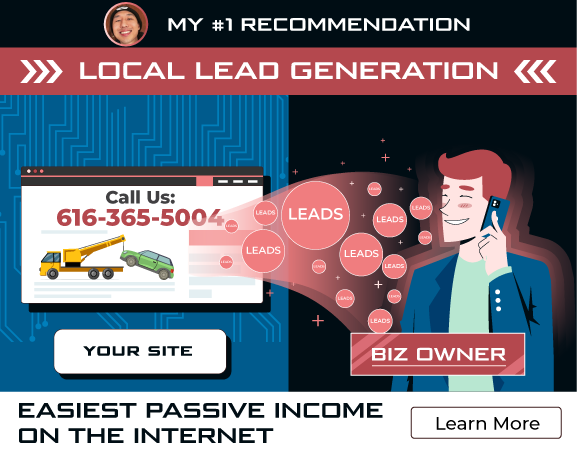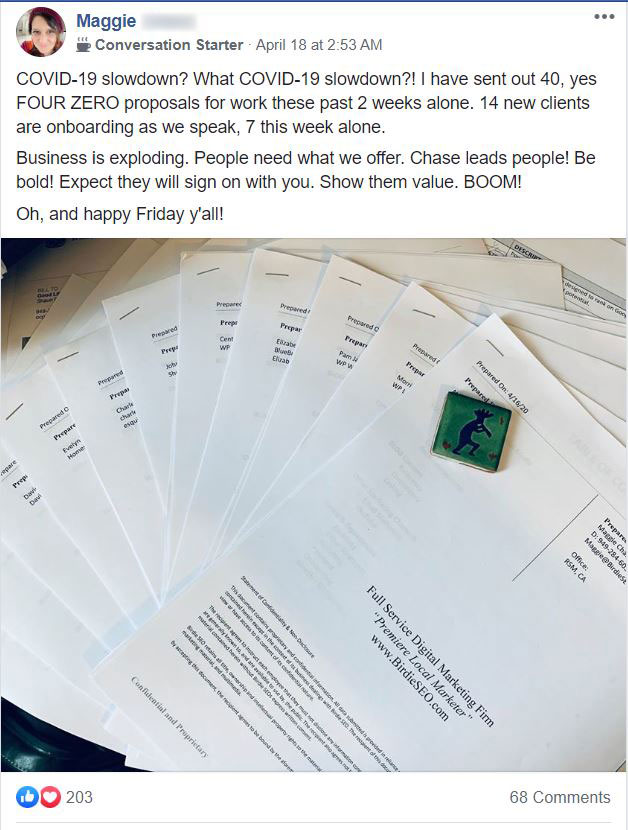
Some common affiliate marketing mistakes are:
- Promoting the wrong products
- Not tracking results
- Sharing unhelpful content
- Having outdated SEO strategies
- Overlooking site speed and content readability
- Using only one marketing method
- Setting unrealistic goals
- Prioritizing sales over helping
Affiliate marketers often make mistakes that prevent them from getting the right results. They either choose products that don't align with their audience's interests or fail to create compelling, authentic content. This is why 95% of beginner affiliates fail within their first year.
The biggest problem in affiliate marketing is the oversaturation of the market and failure to stand out. Hundreds of affiliates promote the similar products from the same platforms like Amazon or CJ Affiliate. According to Awin, the average conversion rate for affiliate promotions is only at 0.5-1%. For every 100 people who view your content, only 1 person will buy.
Affiliate marketing itself can be a lucrative business model where you can earn $500 or more per month in commissions. According to Insider Intelligence, top-performing affiliates earn as much as $1.5 million yearly. Affiliate marketer Matt Diggity reports making a combined revenue of $400K per month through affiliate partnerships with his companies, Affiliate Lab and Authority Builder.
However, you need to take the right steps to reach this level of income. You need consistency and the right mindset to become a successful affiliate marketer. Alexander Stoyanov, an affiliate marketer and founder of Wealthy By Default, says that he found it hard to take affiliate marketing as a serious business model. This resulted in him making mistakes and getting low traffic to his affiliate offers. Alexander shares that everything eventually worked out when he identified what worked for him best as an affiliate.


Ana Skyes, a blogger and affiliate marketer from Birmingham, UK, shares that she failed at affiliate marketing because she made the mistake of promoting the wrong products. She first became an affiliate for a $97 online productivity course that she knew nothing about. She didn't make a single sale from this product because her audience didn't care about it. Ana also struggled with low traffic to her blog where she posts her affiliate links, resulting in only 1,000 per month with minimal clicks.
This article covers the top 13 affiliate marketing mistakes and how to solve them. We’ll also give 7 tips to get higher affiliate commissions. At the end of the article, we’ll talk about a potentially more profitable business model than affiliate marketing
13 Mistakes That Prevent Affiliates From Being Successful
1. Choosing the Wrong Products
Choosing the wrong products to sell in affiliate marketing involves selling products your target audience doesn’t want or need. This leads to poor engagement and conversion. You’ll also be wasting your time and effort by marketing products that won’t sell well.
You need to understand your target audience to choose the right affiliate product to sell. You can conduct market research, use social listening tools, or analyze competitor listings. Social listening tools track mentions, conversations, and trends related to specific topics, brands, or industries across social media and the web. Examples include Hootsuite, Brandwatch, and BuzzSumo. These tools analyze data to provide insights into what your target audience is talking about, their concerns, and their interests. So, you can tailor your marketing strategies effectively.
2. Not Tracking Results
Not tracking results in affiliate marketing means you're not checking how well your promotional efforts are doing. Without tracking, you can't see which strategies work or where you need improvement. This leads to missed opportunities to increase sales and optimize your campaigns. Your conversion rate will likely stay low or decrease.
You can use analytical tools to track affiliate marketing results. Google Analytics tracks website traffic and user behavior. ClickMeter is a tool that tracks, compares, and optimizes all your marketing links in one place. AffTrack offers real-time analytics and tracking. You can also use
affiliate dashboards provided by affiliate programs to monitor your performance, understand your audience's behavior, and adjust your strategies for better results.
3. Sharing Unhelpful Content
Sharing unhelpful content can lead to decreased trust and low engagement. Some examples of unhelpful content include too many ads and less helpful or irrelevant content. You could also be posting outdated or inaccurate information. Your product descriptions might be too shallow and lack the important information that your audience wants to read. These types of content fail to engage or inform your audience.
You can conduct keyword research to discover topics that your target audience is searching for. You can use tools like Google Keyword Planner which helps find keywords related to your niche and shows their search volume and competition. Ahrefs and SEMrush offer more advanced insights, including keyword difficulty, search trends, and related queries. Engage with your target audience through comments and social media to gather feedback and questions. This can guide your content creation. Stay updated on industry trends and product developments to provide the most current and useful information.
4. Having Outdated SEO Strategies
Having outdated search optimization (SEO) strategies can limit the reach of your content. It could decrease its visibility in search engines. So, your marketing efforts might not be maximized. Adapting SEO strategies ensures that your content reaches a wider audience by appearing higher in search engine results. According to AuthorityHacker, 78.3% of affiliate marketers use SEO as a primary traffic source.
You can also conduct keyword research as an SEO strategy. Then, create high-quality and valuable content around those keywords. Build backlinks to increase your site’s authority. This means getting websites to link to your content. The more reputable sites that link to your content, the higher your content may rank in search results. Optimize your website’s speed and mobile responsiveness. You can use Yoast SEO for WordPress site optimization.
5. Overlooking Site Speed and Content Readability
Overlooking site speed and content readability can negatively impact user experience and SEO. Slow-loading pages discourage visitors and increase bounce rates. A high bounce rate can indicate that your website's landing pages are not engaging or relevant. Hard-to-read content can also discourage visitors from staying and engaging with your website.
Focus on optimizing website elements. This includes compressing images, using content delivery networks (CDNs), minimizing HTTP requests, optimizing file sizes (CSS, JavaScript), and leveraging browser caching. You can use tools like Google PageSpeed Insights or GTmetrix.
Use simple language, short sentences, and clear headings. Break up text with bullet points or lists, and use images or videos to complement text. Tools like the Hemingway App can help analyze and improve readability by suggesting simpler alternatives and identifying complex sentences.
6. Using Only One Marketing Method
Using only one marketing method can limit your reach. Different segments of your target audience may prefer different platforms or types of content. Also, market dynamics and platform algorithms change. So, what works today may not be as effective tomorrow.
You should diversify your marketing methods. Include a mix of email marketing, social media, SEO, and paid advertising. This ensures you can reach your target audience across different platforms and at various stages of the buyer's journey. This increases your visibility. It also reduces the risk associated with changes in platform algorithms or audience behaviors.
7. Setting Unrealistic Goals
Setting unrealistic goals in affiliate marketing can lead to disappointment and burnout. This can lead to strategies that chase quick wins rather than sustainable growth. It might also cause you to invest in the wrong areas. You could neglect aspects like audience relationship building and long-term brand credibility.
Success in affiliate marketing requires time, patience, and consistent effort. Break down your main goal into smaller and manageable objectives. This makes it easier to track progress and stay motivated. It takes 6 to 12 months to start seeing results with affiliate marketing. Those who earn high commissions in a shorter amount of time are not the norm. You can get advice from experienced affiliates to gain insights on realistic outcomes.
8. Prioritizing Sales Over Helping
Prioritizing sales over helping focuses too much on pushing products rather than addressing the audience's needs. It can make your content sound insincere. Audiences want authentic recommendations, not just sales pitches.
Build trust through helpful and informative content. This encourages a more positive response to your affiliate links. Prioritizing assistance over aggressive selling can lead to more sales because your audience values your guidance and trusts your recommendations.
9. Lacking Product Knowledge
Lacking product knowledge means not fully understanding or being able to communicate the benefits and features of the products you're promoting. This restricts your ability to tailor your marketing efforts. You won’t be able to address specific audience pain points. This results in less effective promotions and reduced sales potential.
Learn more about the product you’re offering through research, reviews, and using the product yourself if possible. This can help you create more authentic and detailed content. Engage with the product's community or speak directly with the creators. This can provide insights that can enrich your marketing efforts.10. Not Updating Content
Not updating content can make your affiliate marketing materials less relevant and engaging to your audience. This can lead to decreased traffic and lower search engine rankings. Search engines favor fresh, updated content.
Regularly review your articles and blog posts to ensure the information remains current and relevant. Incorporate a recent post feature on your website to highlight the latest content. Use related post links within articles to guide readers to newer, updated information on similar topics. This keeps your content fresh and engaging. It encourages repeat visits and helps maintains your site's authority.
11. Not Disclosing Affiliate Relationships
Not disclosing affiliate relationships is a mistake that can breach trust with your audience and violate legal guidelines. The Federal Trade Commission requires that all affiliate disclosures must be “clear and conspicuous” to the average consumer. It should be clear to your audience that you are being compensated for generating sales as an affiliate.
Transparency about these relationships reassures your audience that your recommendations are made with integrity. Lack of transparency can erode audience trust. It can make them skeptical of your recommendations and less likely to click on your affiliate links.
Make sure that you clearly and prominently inform your audience whenever a post, link, or recommendation might result in a commission. You can do this by adding a general disclosure on your website or specific disclaimers within individual posts.
12. Choosing the Wrong Niche
Choosing a wrong niche can involve a niche that you’re not passionate about. This could make it hard to create compelling content. It could also make it hard to recommend products that your audience wants. This could also be a niche that lacks a profitable audience which can lead to less engagement and difficulty in achieving sales.
Conduct research to identify niches that align with both your interests and market demand. Reevaluate your passions, expertise, and the market to find a niche you are genuinely excited about and that has a promising audience.

According to Anastasia Blogger, some of the most in-demand affiliate marketing niches include home decor and outdoor activities, with affiliate commissions ranging from $100 to $200 per sale. Popular affiliate networks for these niches include Shareasale and CJ Affiliates, with programs like Puffy Mattresses and Wayfair offering high commissions.
13. Only Relying on Organic Traffic
Relying solely on organic traffic limits reach and growth potential. While organic traffic is valuable, you should still diversify your traffic sources. You can miss out on targeted audiences who could be reached through other channels. It neglects the potential of direct interactions and rapid testing that paid channels offer.
Diversify your marketing strategies. Incorporate paid advertising through platforms like Google Ads to target specific audiences. Engage on various social media platforms like Facebook and Instagram to widen your reach. Utilize email marketing to directly communicate with your audience. You can use Constant Contact which offers user-friendly email creation tools and analytics. ConvertKit is designed for creators with advanced automation. AWeber is known for its autoresponders and integrations.
How Can You Avoid Making Mistakes in Affiliate Marketing as a Beginner?
You can avoid making mistakes in affiliate marketing by doing thorough research, learning SEO, diversifying your traffic sources, and tracking results. Research can give you insights in the interests and needs of your target audience. Investing time in learning SEO, content creation, and marketing strategies can enhance the effectiveness of your affiliate marketing efforts. This leads to higher visibility, better engagement, and increased conversions. Tracking and analyzing your results can help you understand what works so you can adjust your strategies.
To be successful in affiliate marketing, you need tools for keyword research, like Google Keyword Planner or Ahrefs. You’ll also need content creation and management tools such as WordPress with Yoast SEO. Social media scheduling tools like Buffer or Hootsuite email marketing such as Mailchimp or ConvertKit are also essential.
5 Tips To Get Higher Affiliate Commissions
What are the Risks and Pitfalls of Affiliate Marketing?
The risks and pitfalls of affiliate marketing include reliance on a single income stream. This can be unstable if affiliate programs change their terms or commission structures. There's also the challenge of building and maintaining trust with your audience while promoting products. Ensuring compliance with legal requirements, like GPDR guidelines for disclosure, is also important to avoid regulatory issues. It requires continuous learning and adaptation to market trends and platform changes to stay effective and profitable in affiliate marketing.
Many people fail at affiliate marketing because of unrealistic expectations, choosing the wrong niche or products, and lack of persistence. Success in affiliate marketing requires patience, consistent effort, and a strategic approach to content and audience engagement.
Is Being an Affiliate Worth It?
Yes, being an affiliate is worth it because it offers a flexible and scalable way to earn income online without needing your own products. According to AuthorityHacker, the average affiliate marketer earns $8,038 per month. Affiliate marketing allows you to leverage established brands and products. You can tap into existing demand while honing your digital marketing skills.

According to ODi Productions on YouTube, Amazon affiliate marketing in 2024 still has opportunities to increase earnings through promotions and strategic approaches. Successful marketers have leveraged YouTube alongside traditional blogging and SEO strategies to maintain and grow their earnings. He suggests a hybrid marketing approach to stay competitive in 2024.

Agreeable_Show4128 on Reddit says that it’s a try-and-fail. You need to put in the effort and investment to succeed. They say that you can make $10,000 a month in 2-6 months with the right knowledge, but you might need to spend $30,000 in ad spend.
Conclusion: Why Local Lead Generation Surpasses Affiliate Marketing
Local lead generation surpasses affiliate marketing due to the lower risk of mistakes and greater control over your business. In affiliate marketing, newcomers often stumble through common pitfalls like choosing the wrong products, ignoring SEO, or misunderstanding their audience. These mistakes can severely impact their earnings potential. By contrast, local lead generation focuses on serving specific local businesses and markets, which limits competition and reduces the likelihood of such errors.

The local lead generation model works by creating and ranking websites in search engines to generate leads for local businesses. This strategy can earn you anywhere from $500 to $2,500 per month per website, with some sites even exceeding this range depending on the market demand and how well the site ranks. Local lead gen offers a more predictable and stable income compared to the volatile commission-based earnings of affiliate marketing. The key advantage lies in owning the digital assets (websites) that continue to generate income over time, which creates a sustainable business model.
Choosing local lead generation over affiliate marketing comes down to seeking stability, predictability, and higher earnings potential. While affiliate marketing presents an appealing start due to its low entry barriers, it often leads to a competitive scramble where only a few truly succeed. Local lead generation offers a clearer path to success by focusing on underserved local markets. This approach contributes positively to local businesses and establishes a lucrative and less competitive niche. It’s a smarter, more sustainable choice for building a profitable online business.



